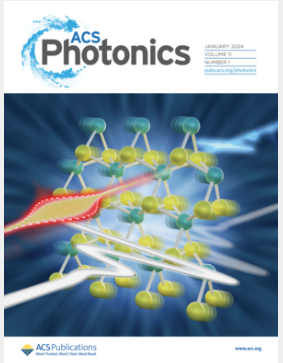II 型异质结构中能量传递过程的可调谐性
IF 6.7
1区 物理与天体物理
Q1 MATERIALS SCIENCE, MULTIDISCIPLINARY
引用次数: 0
摘要
对过渡金属二卤化物异质结构中的能量传递过程进行调制,是在纳米尺度上精确控制能量分布和流动的一条大有可为的途径。通常情况下,在 II 型异质结构中,能量传递被超快电荷过程所掩盖。然而,在本研究中,通过引入共振态,实现了对 MoS2/WS2 异质结构中能量转移过程的控制。通过采用具有能量、时间和空间分辨率的光学技术,我们发现了电荷和附加能量的转移过程。能量转移归因于 WS2 A 激发子与 MoS2 新发现的共振态之间的共振能量排列。通过调节共振态的能量,本研究引入了一种微调能量转移过程的新方法。这项工作不仅揭示了界面电荷和能量转移的基本机制,还提供了一种直接而稳健的方法来调节 II 型异质结构中的能量流。这些研究结果对促进对这些过程的理解具有重要意义,并为开发具有定制功能的电子器件提供了实用见解。本文章由计算机程序翻译,如有差异,请以英文原文为准。

Tunability of the Energy Transfer Process in Type-II Heterostructures
The modulation of energy transfer processes in transition metal dichalcogenide heterostructures signifies a promising avenue for the precise control of energy distribution and flow at the nanoscale. Typically, in type-II heterostructures, energy transfer is overshadowed by ultrafast charge processes. However, in this study, the manipulation of an energy transfer process in the MoS2/WS2 heterostructure has been accomplished through the introduction of a resonant state. By employing optical techniques with energy, temporal, and spatial resolutions, we discern both charge and additional energy transfer processes. The energy transfer is ascribed to the resonant energy alignment between the WS2 A exciton and the newfound resonant state of MoS2. Through the modulation of the energy of the resonant state, this study introduces a novel approach to fine-tune the energy transfer process. This endeavor not only sheds light on the fundamental mechanisms of charge and energy transfer at interfaces but also provides a straightforward yet robust method to regulate energy flow in type-II heterostructures. The findings bear significant implications for advancing the comprehension of these processes and offer practical insights for the development of electronic devices with tailored functionalities.
求助全文
通过发布文献求助,成功后即可免费获取论文全文。
去求助
来源期刊

ACS Photonics
NANOSCIENCE & NANOTECHNOLOGY-MATERIALS SCIENCE, MULTIDISCIPLINARY
CiteScore
11.90
自引率
5.70%
发文量
438
审稿时长
2.3 months
期刊介绍:
Published as soon as accepted and summarized in monthly issues, ACS Photonics will publish Research Articles, Letters, Perspectives, and Reviews, to encompass the full scope of published research in this field.
 求助内容:
求助内容: 应助结果提醒方式:
应助结果提醒方式:


